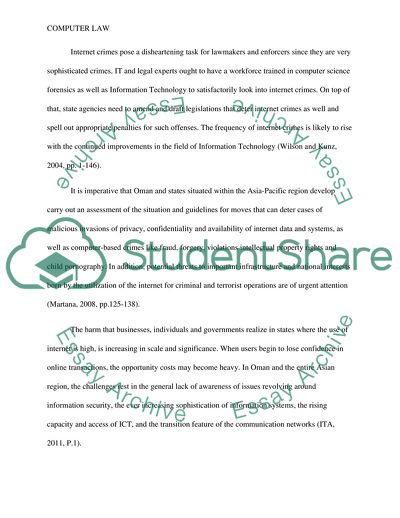Cite this document
(The Advent of the Internet as a Global Communication Mechanism Case Study Example | Topics and Well Written Essays - 4000 words, n.d.)
The Advent of the Internet as a Global Communication Mechanism Case Study Example | Topics and Well Written Essays - 4000 words. https://studentshare.org/information-technology/1828982-computer-law
The Advent of the Internet as a Global Communication Mechanism Case Study Example | Topics and Well Written Essays - 4000 words. https://studentshare.org/information-technology/1828982-computer-law
(The Advent of the Internet As a Global Communication Mechanism Case Study Example | Topics and Well Written Essays - 4000 Words)
The Advent of the Internet As a Global Communication Mechanism Case Study Example | Topics and Well Written Essays - 4000 Words. https://studentshare.org/information-technology/1828982-computer-law.
The Advent of the Internet As a Global Communication Mechanism Case Study Example | Topics and Well Written Essays - 4000 Words. https://studentshare.org/information-technology/1828982-computer-law.
“The Advent of the Internet As a Global Communication Mechanism Case Study Example | Topics and Well Written Essays - 4000 Words”. https://studentshare.org/information-technology/1828982-computer-law.


